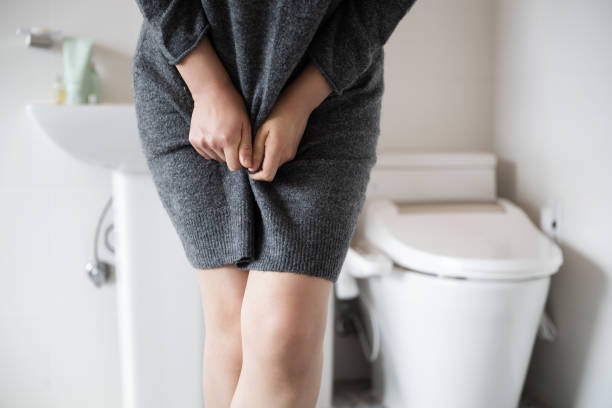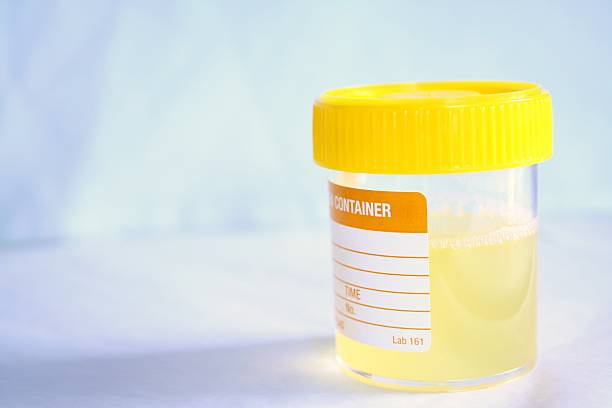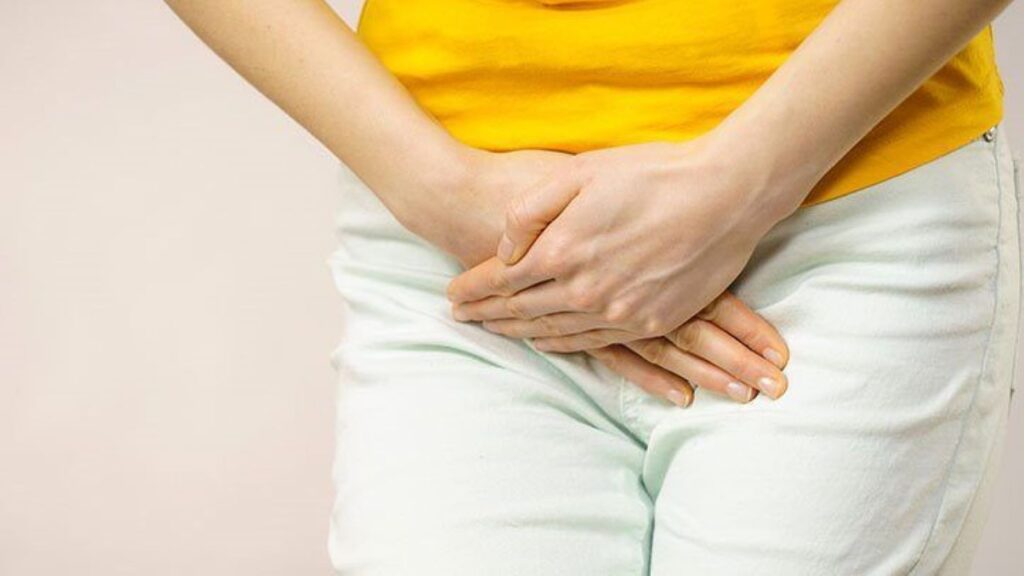Health Conditions
How a UTI Could Be Behind Your Urinary Incontinence
Urinary health is complicated by a variety of interrelated disorders, some of which may worsen each other. Urinary tract infections (UTIs) are a common urinary issue that causes frequent urination, burning, and urgency. Involuntary pee leakage, and urinary incontinence, impact quality of life and self-esteem. Can a UTI cause or worsen urine incontinence? Exploring the potential association between these two illnesses illuminates the complex relationship between urinary tract infections and incontinence, including processes, risk factors, and management implications. This article explores the complex relationship between UTIs and urine incontinence, offering insights for those managing urinary health and seeking symptom alleviation and prevention.

Understanding UTIs and Incontinence
Urinary tract infections (UTIs) are a widespread health problem that affects millions of individuals around the world. While most people are familiar with painful symptoms like frequent urination, burning sensations, and lower abdomen pain, it may surprise you that a UTI can induce urinary incontinence or the involuntary flow of urine.
Correlation Between UTI and Incontinence
UTIs frequently cause temporary urine incontinence. A UTI can cause the bladder to become enlarged and irritated, resulting in a loss of bladder control. A UTI can sometimes cause or exacerbate symptoms of urge incontinence. The inflammation and discomfort caused by the infection might trigger bladder spasms and increase the need to urinate. These contractions can produce involuntary pee flow, which leads to urge incontinence.
Risk Factors and Causes
Several risk factors can increase the chances of acquiring a UTI and incontinence. Women are more prone than men to have UTIs because their urethra is shorter, allowing bacteria to easily enter the bladder. Men who have an enlarged prostate may also acquire UTIs. Pregnant people and diabetics are also more likely to acquire urinary tract infections. Menopause can also raise the chance of acquiring UTIs due to a drop in estrogen levels, which can cause changes in the urinary tract that make it more vulnerable to infection. Additionally, childbirth and aging can weaken the pelvic muscles, resulting in incontinence.
To summarize, a UTI can indeed cause urine incontinence as a symptom. Understanding the link between UTIs and incontinence, as well as the risk factors and causes, can help people take preventive measures to lower their chances of acquiring these illnesses.

Symptoms and Diagnosis
Identifying UTI and Incontinence Symptoms
urine tract infections (UTIs) can result in a variety of symptoms, including transient urine incontinence. Incontinence is the involuntary flow of urine caused by an illness that swells and irritates the bladder. Symptoms of UTIs can include:
- Urine that is cloudy or has a strong smell
- Blood in the Urine
- Pain or burning sensation while urinating.
- Fever and chills.
- Nausea and vomiting.
- Incontinence symptoms could include:
- Urine leaking with physical activity or exertion.
- Frequent urination
- Urge to urinate.
- Inability to retain pee.
It is critical to understand that not all UTIs produce incontinence, and not all incontinence is caused by UTIs. If a person suffers any of these symptoms, they should seek medical attention.
Diagnostic Procedures
A physical exam and a urine sample may be used to diagnose a UTI. The urine sample will be checked for germs and other symptoms of illness. If a UTI is identified, your doctor may prescribe medications to treat it.
A physical exam and questions regarding symptoms may be used to identify incontinence. They may also request that the patient keep a bladder diary to monitor their urine habits and the frequency of incontinence episodes. Additional tests could include:
- Urinalysis and urine culture to detect symptoms of infection.
- Post-void residual measurement is used to determine how much pee remains in the bladder after urinating.
- Urodynamic testing measures bladder function and urine flow.
Overall, if a person has symptoms of a UTI or incontinence, they should seek medical attention to get a correct diagnosis and appropriate treatment.

Treatment Options and Management
Medical treatments
Antibiotics can be used to treat urinary tract infections that lead to incontinence. The antibiotic recommended will be based on the bacterium that is causing the condition. It is critical to follow the entire course of antibiotics given by your doctor, even if your symptoms improve before the medicine is done.
In some circumstances, medication may be administered to relieve incontinence symptoms. These drugs function by relaxing the bladder muscles or constricting the urethral sphincter. However, medication should only be administered under the direction of a medical practitioner.
Lifestyle Changes and Home Remedies
In addition to medical therapies, lifestyle changes and home remedies can help manage incontinence symptoms. Pelvic floor exercises, sometimes called Kegels, can help strengthen the muscles that control the bladder. For optimal results, perform these exercises on a regular basis, contracting and relaxing the pelvic floor muscles.
Dietary adjustments might also be beneficial in treating incontinence symptoms. Drinking enough water will help you flush out bacteria and avoid UTIs. Cranberry juice may also be advantageous since it contains chemicals that can help keep bacteria from adhering to the bladder wall. However, cranberry juice should not be used as a replacement for medical treatment.
Reduced coffee and alcohol consumption can also help with incontinence symptoms. These chemicals can irritate the bladder, causing it to urinate more frequently. Constipation, which puts strain on the bladder and increases the risk of incontinence, can also be avoided with a balanced diet rich in fiber.
Overall, medical therapies for UTI-related incontinence include antibiotics and medicines, as well as lifestyle changes and home remedies such as pelvic floor exercises and dietary changes. It is critical to contact a healthcare practitioner to identify the best course of action for specific circumstances.

Prevention and Long-Term Outlook
Preventing UTIs and Incontinence
UTIs and incontinence can be avoided with a few easy lifestyle adjustments. Drinking plenty of water and urinating often can help clear bacteria from the urinary tract and prevent infections. Avoiding bladder irritants like caffeine, alcohol, and acidic meals can also help you avoid UTIs. Women should wipe from front to back after using the restroom to keep bacteria from entering the urethra.
Practicing excellent hygiene and preventing constipation can also help prevent UTIs. Women should avoid using douches or other feminine hygiene products that may upset the vagina’s natural bacterial balance. Men and women should practice safe sex to avoid the spread of sexually transmitted infections that might result in UTIs.
Improving Quality of Life
Incontinence can be an unpleasant and embarrassing problem, but there are solutions to enhance your quality of life. Strengthening the pelvic floor muscles with exercises like Kegels can aid with bladder control. Maintaining a healthy weight and not smoking might also help with bladder control.
Furthermore, avoiding bladder irritants like caffeine and alcohol might help lessen the frequency and severity of incontinence. Men and women should prevent constipation, which can put a strain on the bladder and cause incontinence.
Overall, with adequate prevention and management measures, UTIs and incontinence can be effectively treated to improve quality of life. Individuals can regain control of their bladder function and improve their quality of life by making modest lifestyle adjustments and getting medical treatment as needed.
Conclusion
In conclusion, while urinary tract infections (UTIs) and urine incontinence may appear to be separate illnesses, their interrelationship highlights the significance of comprehensive urinary health treatment. While a UTI does not directly cause urine incontinence, the discomfort and inflammation associated with the infection might increase existing incontinence symptoms or induce temporary leaking. Understanding the potential link enables people to detect the signs and symptoms of both UTIs and urine incontinence, allowing for timely intervention and proper treatment. Individuals can reduce their risk of urinary incontinence aggravation and enhance overall urinary health by following preventive measures such as maintaining excellent hygiene, staying hydrated, and getting immediate medical assistance for UTIs. Furthermore, addressing underlying causes of incontinence, such as pelvic floor dysfunction or bladder irritation, can improve treatment techniques and quality of life for persons suffering from these frequent urinary issues.
Trusted Health, Wellness, and Medical advice for your well-being


